[slideshare id=19958007&doc=rwjf-sm-re-meeting-beth-kanter-slides-130425083953-phpapp01]
Last week, I was lucky enough to be invited to participate in a meeting organized by the Robert Wood Johnson Foundation called “Advancing Social Media Measurement for Foundations.” The participants were a cross-disciplinary group and included people who work at different foundations in the areas of evaluation, communication, social media, and programs as well as people who work for nonprofits and as consultants who work in evaluation, social media, network analysis, data scientists, and others.
The main part of the meeting was two working sessions where we were divided into five small groups to focus defining outcomes, strategies, key performance metrics, and measurement methods for five outcome areas that may be common to many foundation’s communication’s strategies.
- Our foundation is viewed a valuable information source
- Our foundation is viewed as transparent
- Lessons are disseminated, multiplying impact beyond our foundation’s reach
- Public knowledge, pressure (to change policy) and action increase in strategic areas
- Our networks strengthen and diversify
Our group, like some others, found it difficult to work on these generically and struggled a bit until we created some specific scenarios. Having spent a year working with KD Paine on our book, “Measuring the Networked Nonprofit,” we faced the same challenge at times, although we had fairly large group of Packard Foundation grantees testing the frameworks which helped. Despite the difficulty of working measurement in a generic way, the output from sessions was quite valuable.
What was most useful for me was the opportunity to see around the table with evaluators and communications people and brainstorm, shape, and clarify success outcomes. It was also quite useful to hear and try to translate different evaluation frameworks and methodologies to social media.
MT @jeffcdi@mayurhpatel of @knightfdn “social web is not icing; needs to be baked in” to foundation strategy, w HT to @elzbthmllr #sm_re
— Elizabeth R. Miller (@ElzbthMllr) April 25, 2013
Mostly, these outcomes focused on communications, but I would like to see another step – going through this process but with a grant strategy or program lens. The day kicked off with presentations. I shared the above presentation about the State of Social Media Measurement in the nonprofit sector. It covered maturity of practice in social media and measurement and brief case studies of advanced practitioners including Humane Society, UpWell, and DoSomething. I shared some areas of improvement and notes about tools, including Alison Carlman from Global Giving’s spreadsheet.
“SlideShare is a hidden gem for sharing philanthropic learnings and content” @mayurhpatel from @knightfdn @rwjf #SM_RE — Christine Nieves (@NievesChristine) April 25, 2013
Mayur Patel from the Knight Foundation shared an fantastic presentation on the Knight Foundation’s experience measuring its social media use. His thoughts are shared in this follow up blog post and I captured the main points as Tweets in this Storify. What struck me were the many similarities to business to business marketing strategies and measurement.
[slideshare id=19970374&doc=measuringsocialmediaimpactknightcommunityinfochallenge-130425113900-phpapp02]
Katelyn Mack from FSG gave a presentation about the results of social media impact for the Knight Foundation Community Information Challenge. The presentation offers some great examples of how to measure offline engagement and how to measure it.
At the end of the meeting, we were asked to sign a “commitment to continuing to advance social media measurement.” There is a desire to move the practice of measurement forward in the field – so stay tuned for the grand synthesis and report from the meeting and continued dialogue. For starters, follow the #sm_re hashtag on Twitter.
